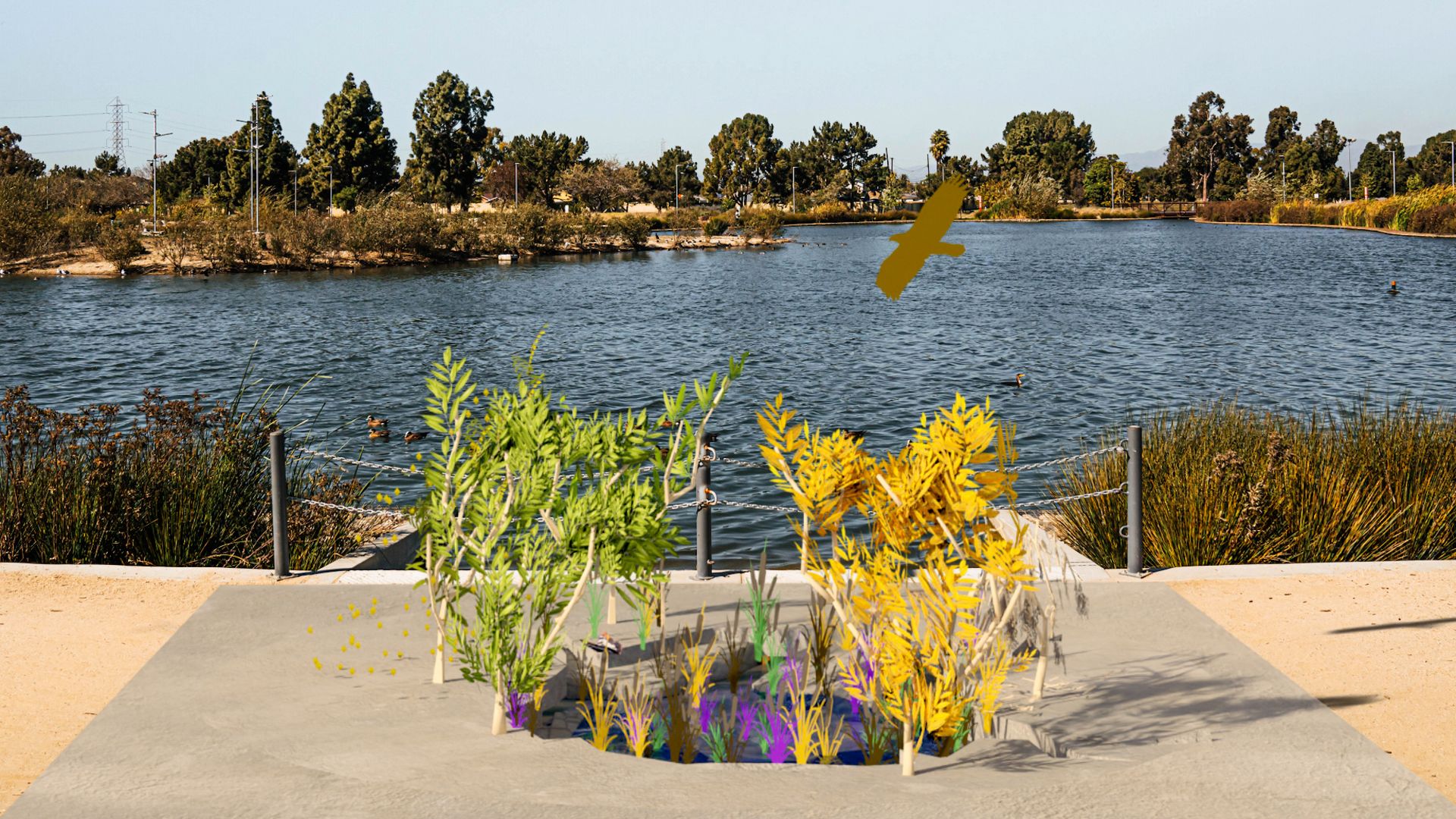The second round of augmented reality (AR) projects organised by the Los Angeles County Museum of Art (Lacma) and Snapchat, titled Monumental Perspectives, launches today (18 April). Following the project’s inauguration a year ago, for the second round artists Judy Baca, Kang Seung Lee and Sandra de la Loza were chosen to realise AR “lenses” accessible in three different locations in Los Angeles, and just about everywhere else. All users need is a smart phone and the Snapchat app, and they can access the lenses by scanning the posted Snapcodes with the scanner within the app.
Rita Gonzalez, head of contemporary art at Lacma, has been a key member of the museum’s curatorial team overseeing the project (a team that includes museum director Michael Govan). She says the project is a way to rethink public monuments, a hot topic for the past five years.
“We’ve seen a lot of contestation and deconstructions of historical monuments all over the world,” she says, “that have kind of coincided with calls for justice and recognising political reckoning.” The project’s organisers looked for artists “who have a long history of working with the public in different ways” she says, but weren't necessarily experts in AR or web-based platforms. Snapchat paired them with programmers to create the animations.

Still from Rita de la Loza, What the Willow Whispers, 2022 Courtesy the artist, Snap Inc. and the Los Angeles County Museum of Art
The project is a good fit for someone like de la Loza who considers herself “a research-based artist who investigates histories”, who has given much thought to monuments and has previously created site-specific works. In What the Willow Whispers, at Earvin “Magic” Johnson Park, the pavement breaks open to reveal an outpouring of native plants and animals from an earlier Los Angeles. Featured in the animation, she says, is “the willow tree that would have grown alongside Compton Creek, which passes nearby and ran through the community, so I pay homage to erased native ecosystems”. She adds, “I try to make visible the underlayers of the built environment.”
Baca’s The River Once Ran also looks back in time with a lens intended to be seen alongside the famous half-mile-long mural she designed in the 1970s, The Great Wall of Los Angeles, which is painted on the sides of a flood control channel in North Hollywood. (Her lens will be available there later this summer.) It shows a creekbed teeming with plants and animals, including a coyote pausing to take a drink from the flowing water.

Still from Kang Seung Lee, la revolución es la solución, 2022 Courtesy the artist, Snap Inc. and the Los Angeles County Museum of Art
Lee’s work, la revolución es la solución, has more contemporary references, specifically to the 1991 killing of Latasha Harlins by a Korean American storeowner and its aftermath. Using animated kites floating in the sky at the Algin Sutton Recreation Center, he attempts to turn our attention to activists who have worked to rebuild communities. Harlins grew up frequenting the playground there, which was renamed in her honour last year.
Location contributes contextual meaning to all the works in Monumental Perspectives, but the lenses may also be accessed by Snapchat users anywhere in the world.


